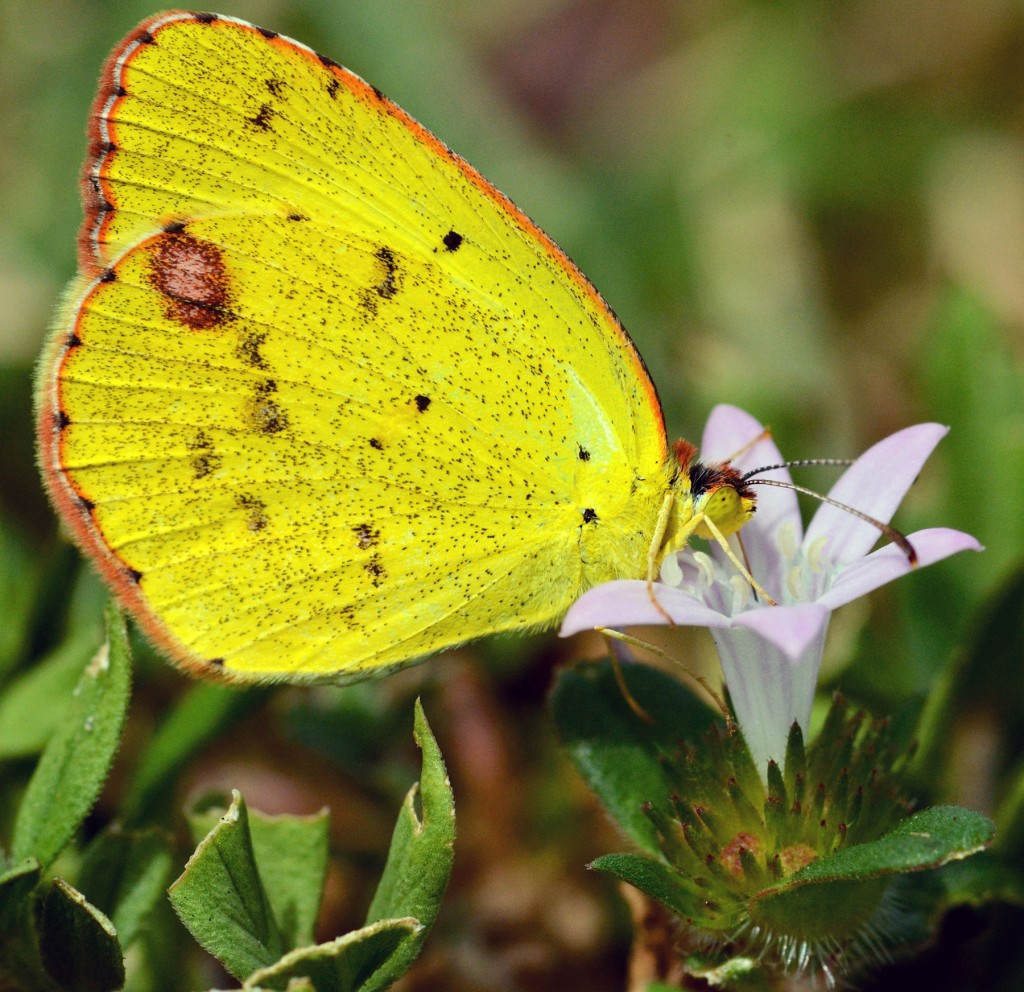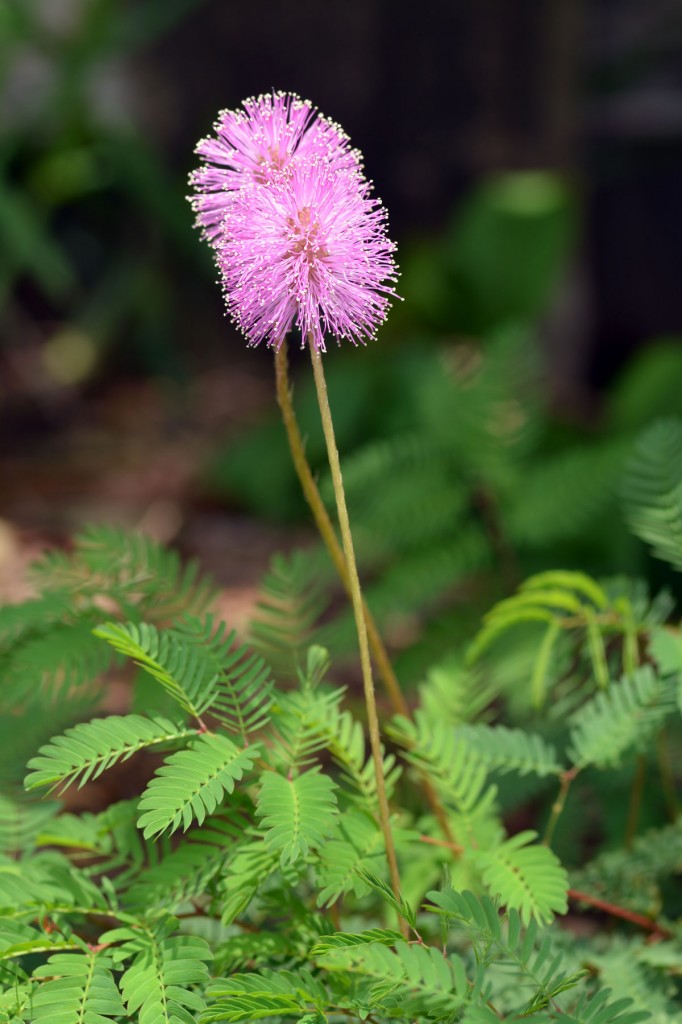Halloween is right around the corner and the butterflies are popping out of the woodwork. I’ve seen the “standard” passion vine butterflies (heliconians attracted to the Passiflora vines I have growing along the backyard fence) all summer, and they’re still out in force, but I’ve also got the smaller “grassy” butterflies flying around now. One that I’ve been trying to get a good picture of for a long time is the lovely little yellow (which, by the way, is actually its standard American name), Eurema lisa:

They’re normally pretty quick to take flight when approached, so I was quite happy that this little lady (males don’t have the large pink spot at the top corner of the hindwing) was calm enough to allow me to approach and get a few images. She was nectaring from a couple of weeds in the front lawn, the wire weed (Sida acuta, which longtime readers of this blog might recall as the larval food plant of the Mallow Scrub-Hairstreak) and the mexican clover (Richardia grandiflora, which no one really “likes” but I tolerate for its year-round flowering, which keeps nectaring insects like bees and butterflies attracted to the yard when nothing else might be in bloom).

The little yellow is probably more common in my yard now that I’ve got a good patch of Powderpuff (Mimosa strigillosa) going in it; that, along with Partridge Pea, is its larval food plant. It’s also a darn pretty little thing:

I haven’t seen any of the caterpillars yet, as far as I know, but I’ve seen more than one of the butterflies, so I’m hopeful this will be a semipermanent addition to the insect fauna at the homestead.
Etymology
My favorite site for online etymology of hard-to-find insect names is the Century Dictionary Online. While the main site appears to be gone, there are some easy-to-search other sites that still produce results. And thank goodness. After all, my initial thought for what Eurema might mean was that it can’t just be a corruption of Eureka, “I have found it!,” can it? And, well, no, not really. Here’s what it says:
So Eurema, like Eureka, is indeed associated with discovery; eureka being merely the perfect indicative active form of the verb “to discover.” (By the way, the 120-year-old dictionary’s taxonomy is no longer current, referring the reader to the Old World genus Terias, whereas we now point back to the New World genus Eurema. The entry for Terias, by the way, is rather uninformative, so I’ll skip it, if you don’t mind.)
Lisa, of course, is a diminutive for Elisabeth (appropriate, given the diminutive stature of these butterflies, don’t you think?). According to some sources, the name Elisabeth derives from the Hebrew Elishebha, “God is an oath,” but I don’t know how much, ahem, faith to put in that…
One nice etymological thought is that this family, or perhaps the larger Sulphur butterflies, gave rise to the common name “butterfly.” After all, these are the creamiest, butteriest yellow of all the butterflies.

